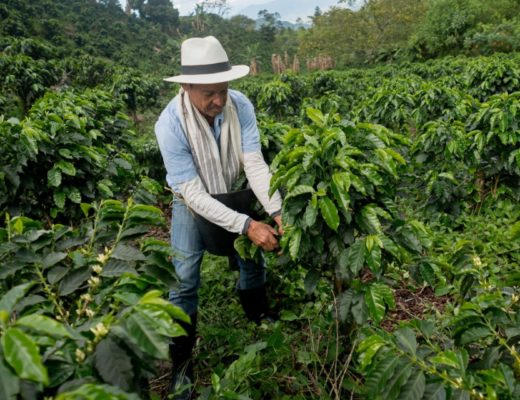According to research recently published earlier this year, Brazil’s Southeastern Mountain coffee growing region could see a drastic loss of its viable coffee growing landscapes by the year 2050, due primarily to the rising global temperatures caused by a changing climate. But there is hope, in that, if producers begin to implement coffee agroforestry systems with an average of 50% shade coverage across these current landscapes, it will help buffer the projected increase of temperature, retaining the production capacity for up to 75% of the land currently being used in this region.
This modeling was conducted by agricultural and ecological scientists using MaxEnt open source modeling software designed for evaluating species niches and distributions. The modeling shows that agroforestry will play a vital role in helping buffer and mitigate the impacts of climate change in the region, while also serving as a “frontier buffer” between agricultural lands and protected conservational areas (Gomes et al., 2020). This is great news for coffee producers, wildlife preservation, and tree planters.
Read: What we can Learn From the Fight against Coffee Leaf Rust
The article further explains the economic and ecological value trees will play in coffee agroforestry systems across Brazil. Benefits include nutrient cycling, biodiversity, carbon storage, along with wind and rain buffering from increasingly intense weather=related events and helping control the overall rising temperature across the region. There is evidence showing that although some commonly argue that shade compromises yield production, shade levels at or below 50% do not seem to lower yields within these topographical conditions.
Furthermore, it is shown that coffee productivity is more stable and predictable when grown under shade, whereas full sun production will often see more volatile production numbers year to year. With more consistency, come stable markets which are enjoyed by both the producer and buyer.
The research article referenced in this blog, “Agroforestry systems can mitigate the impacts of climate change on coffee production: A spatially explicit assessment in Brazil” details the importance of elevation and topographical constraints to this research, and overall the outlook is very promising for coffee producers to heed the advice and modeling given in this research. It should also be noted that these conditions of temperatures rising apply globally, across several coffee growing regions.
Join the Arbor Day coffee club.
The article mentioned that by the year 2050 in Nicaragua, they will likely see a reduction of 90% of its suitable coffee growing areas established in today’s production. This means that while temperatures rise, so will the elevation where coffee can be grown. This will put tremendous pressure on established forests and protected watersheds to be reserved. It is mentioned that with coffee agroforestry systems being established in Nicaragua, this will also help buffer the conflict between production and conservation.
These additional findings are yet another reason to buy shade-grown coffee. Thanks for reading.
Learn more about Arbor Day Coffee.
Reference
Gomes, L. C., Bianchi, F. J. J. A., Cardoso, I. M., Fernandes, R. B. A., Fernandes Filho, E. I., & Schulte, R. P. O. (2020). Agroforestry systems can mitigate the impacts of climate change on coffee production: A spatially explicit assessment in Brazil. Agriculture, Ecosystems & Environment, 294, 106858.





No Comments